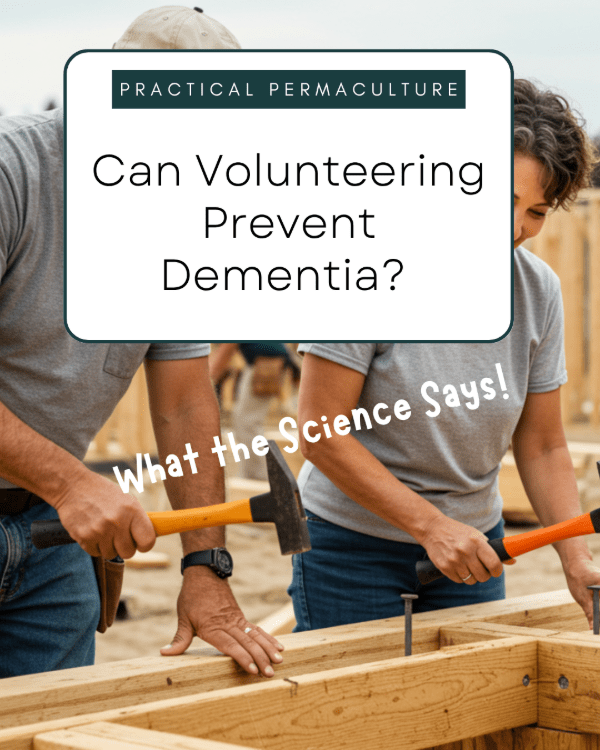
Natural Pest Control in the Garden: How to Deter Pests Using Earth-Friendly Methods
You don’t have to choose between a thriving garden and a healthy planet.
At Earth Keepers, we believe pest control doesn’t need to poison our soil or harm pollinators. Permaculture shows us the truth is: nature already has the solution.
With a few simple, earth-friendly methods, you can keep aphids, slugs, and beetles at bay—without chemicals, back strain, or guilt.
And the best part? These strategies work with your ecosystem, not against it—making your garden healthier, more resilient, and vibrant.
Let’s explore how to naturally protect your plants.
🐞 Why Natural Pest Control Matters (Especially for Seniors)
Chemical pesticides may kill bugs, but they also:
- Harm beneficial insects like bees and ladybugs
- Contaminate soil and water
- Pose health risks—especially for older adults with sensitive lungs or immune systems
Did you know that, according to the EPA, long-term exposure to synthetic pesticides is linked to respiratory issues, neurological effects, and increased risk of chronic illness?
But you don’t need harsh chemicals to grow beautiful food!
At Earth Keepers, we use regenerative gardening practices that prevent pests before they start—using design, diversity, and nature’s own defenses.
And we want to share what we’ve learned so you can too.
🌿 5 Earth-Friendly Ways to Deter Garden Pests
1. Companion Planting: Nature’s Bodyguards
Some plants are natural pest deterrents. Pair them with your veggies to protect your harvest.
Try these powerful plant pairs:
- Basil + Tomatoes: Basil repels thrips, whiteflies, and tomato hornworms
- Marigolds + Everything: These bright blooms deter nematodes and attract beneficial insects
- Garlic + Roses: Keeps aphids and Japanese beetles away
- Nasturtiums + Cucumbers: Trap crop for aphids (they’ll go for the nasturtiums instead)
💡 Pro Tip: Plant marigolds around the edge of your garden as a good-looking “living fence” against pests.
2. Invite Beneficial Insects
Not all bugs are enemies. Some are your garden’s best defenders.
Meet your allies:
- Ladybugs: Eat up to 50 aphids a day
- Lacewings: Their larvae devour mites, thrips, and mealybugs
- Praying mantises: Generalist predators that keep populations in check
- Hoverflies: Pollinate and eat aphids
How to attract them:
- Plant nectar-rich flowers like yarrow, dill, and fennel
- Avoid broad-spectrum sprays (even organic ones)
- Leave a small “insect hotel” or pile of sticks for shelter

3. Use Physical Barriers (No Bending Required)
For seniors or anyone wanting low-effort protection, physical barriers are a game-changer.
Easy options:
- Floating row covers: Lightweight fabric that lets in sun and water—but keeps bugs out
- Copper tape: Stops slugs and snails in their tracks (they get a tiny shock!)
- Netting: Protects berries and greens from birds and beetles
- Raised beds with fine mesh: Prevents soil-dwelling pests
✅ Pro Tip: Set up once on a cool day, and your work will last all season—no daily spraying needed.
4. DIY Natural Sprays (Safe & Effective)
When you need a quick fix, try these non-toxic sprays:
| Garlic & Chili Spray | Neem Oil Spray |
|---|---|
| 1 chopped garlic bulb | Dilute 1–2 tsp neem oil in 1 quart water + soap |
| 1 tsp cayenne pepper | Spray every 7–10 days |
| 1 quart water | Spray at dusk to avoid harming bees |
| 1 tsp liquid castile soap (we love Dr. Bronner’s) | Avoid flowers during the day |
Repels: aphids, mites, beetles Disrupts feeding and reproduction
5. Encourage Birds & Frogs
Nature’s pest control team isn’t just insects.
Birds eat thousands of insects a year. Frogs and toads devour slugs and snails.
How to welcome them:
- Add a small birdbath or shallow pond
- Install a nesting box for chickadees or wrens
- Leave a brush pile or rock stack for frogs to hide under
- Plant native shrubs for shelter
At Earth Keepers, our community garden has a small pond that attracts frogs—and we’ve seen slug damage drop by half (or more!) in just one season.
🌱 Design Your Garden to Prevent Pests from the Start
The best pest control is through design that is intentionally preventative.
At Earth Keepers, we use permaculture principles to create gardens that are naturally resilient:
- Diversity over monoculture: A mix of plants confuses pests and repels foes
- Healthy soil = healthy plants: Compost and mulch boost plant immunity
- Crop rotation: Prevents soil-borne pests from building up
- Strong airflow: Spacing plants reduces fungal issues and hiding spots
🌿 Remember: A few bugs are normal. A healthy garden has balance—not perfection.
🐌 What to Avoid (Even “Organic” Traps)
Not all natural methods are created equal.
Avoid:
- Diatomaceous earth (DE): Harmful to pollinators and your lungs when inhaled
- Overuse of neem: Can stress plants if applied too often
- Sticky traps: Catch beneficial insects too, and reduce food for birds and bats
Instead, focus on longer-term ecosystem health over quick fixes that require constant upkeep.
🌼 Final Thought: Your Garden Is a Living Community
At Earth Keepers, we don’t see pests as enemies to be wiped out.
We see them as signals—better yet, invitations—to listen to what the biology is telling us.
When aphids appear, perhaps your veggies are stressed. When slugs gather? It could mean too much moisture or overly-compacted soil.
And if you feel stuck—leverage tech! Take a photo of your pest issue and ask AI or a local gardening group on Facebook.
By using natural pest control, you’re not just protecting your tomatoes. You’re nurturing a web of life—where every creature, from the tiniest beetle to the symphonic evening songbird, has a role.
That’s the kind of garden we think is worth growing.
🌱 Key Takeaways
- Natural pest control protects your health, the soil, and pollinators.
- Companion planting, beneficial insects, and physical barriers are senior-friendly and effective.
- Invite birds and frogs—they’re nature’s best pest control.
- Design your garden for diversity, healthy soil, and airflow to prevent problems.
- At Earth Keepers, regenerative gardening means working with nature, not against it.
Want to Grow in a Garden That Grows You Back?
Earth Keepers is building a 55+ regenerative community in Nevada where gardening isn’t a chore—it’s a way of life.
You’ll grow food, heal the land, and connect with neighbors—all in a design that’s easy on the body and kind to the planet.
Join the movement where sustainable aging means growing forward—not just older.



